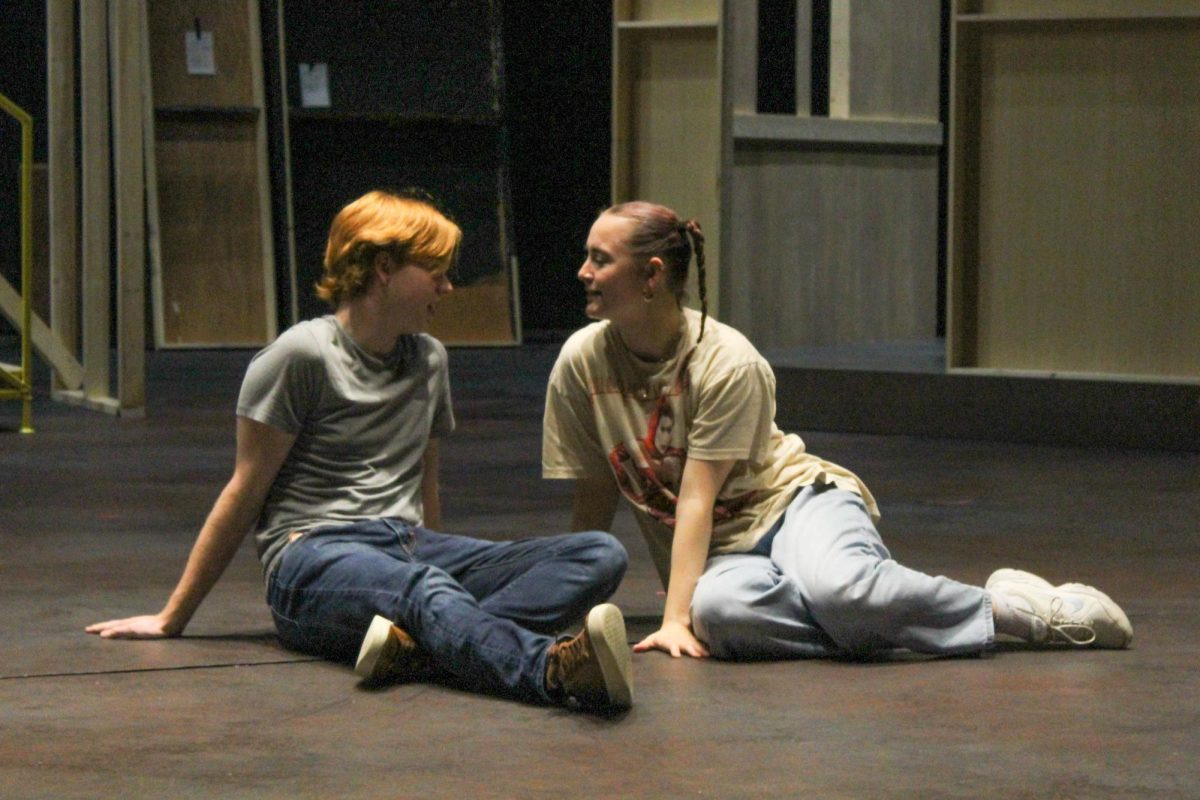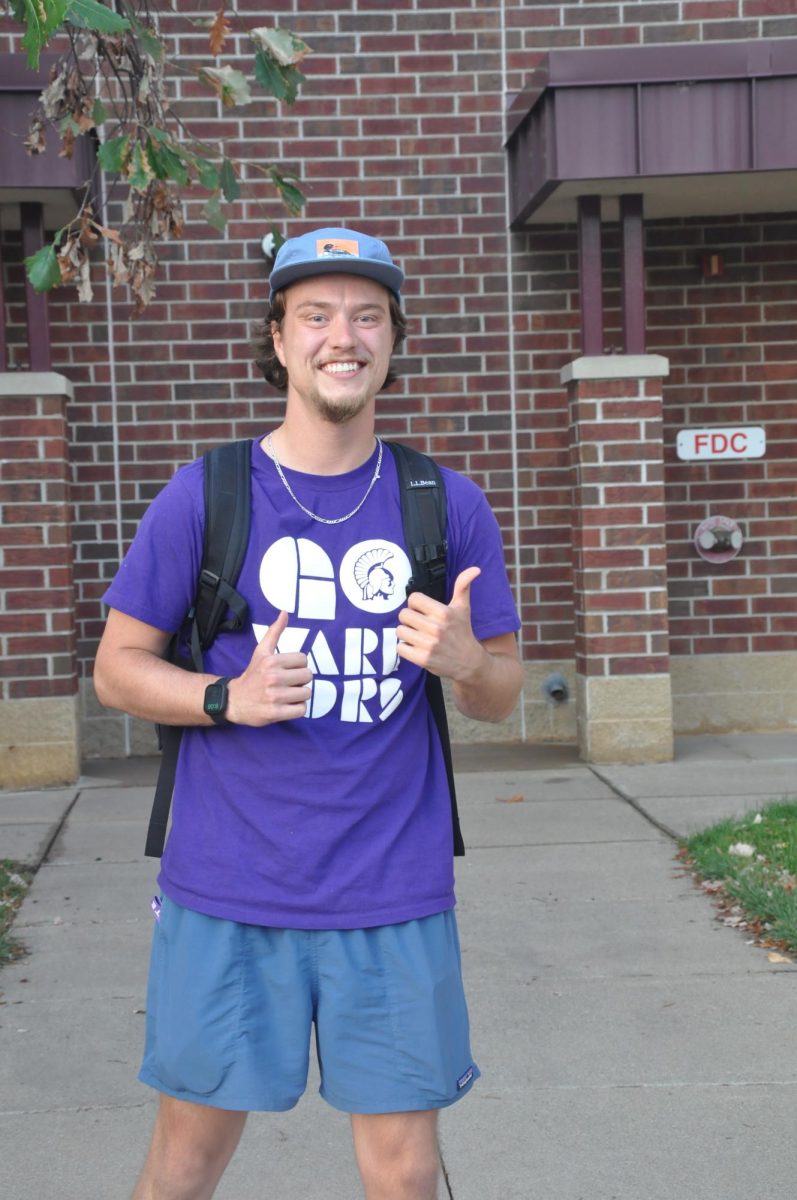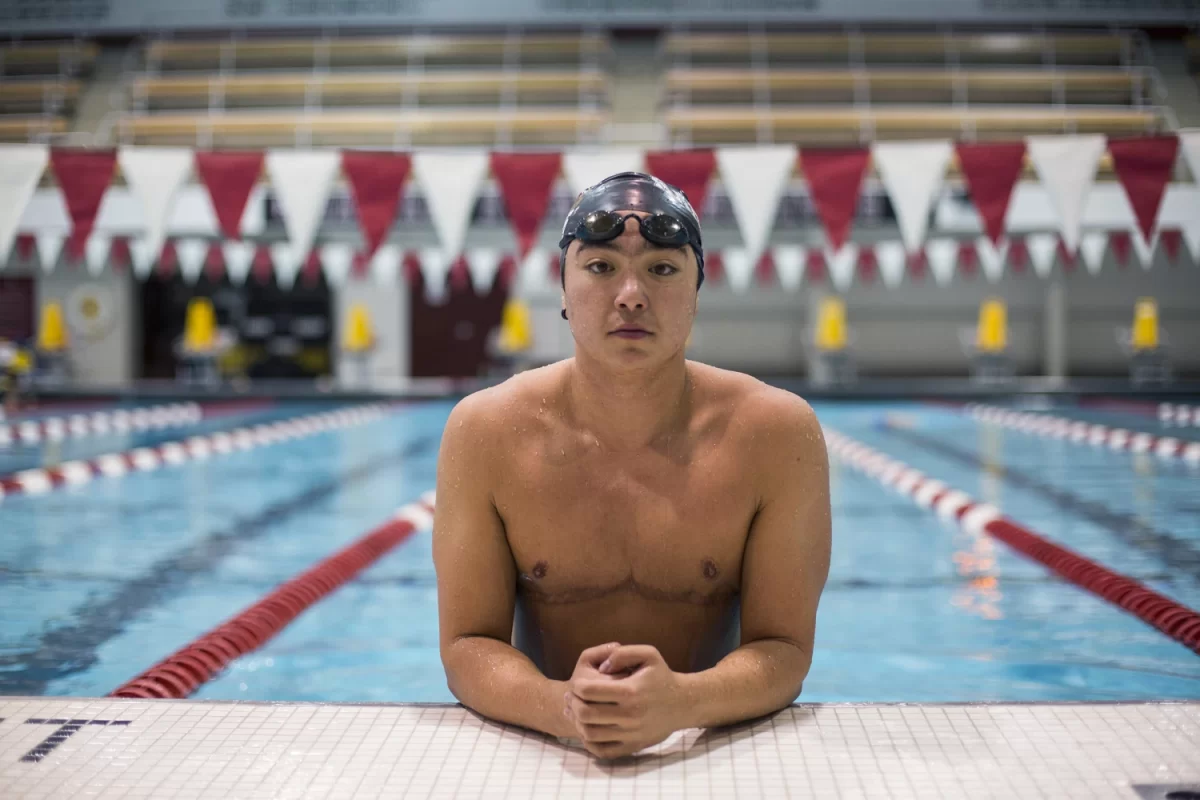Jordan Gerard/ Winonan
Three students explained to community members, faculty and students why they believe Winona State University should reframe the End of the Trail statue on campus at a public forum last Monday.
Non-traditional student Aaron Camacho, English major Alex Paulson and cardiopulmonary rehab major Regan Holm highlighted the negative connotations surrounding the statue’s current state. They outlined their plans to improve the portrayal of indigenous Native American cultures and its effect on the campus environment.
“It’s important that faculty and students feel comfortable with what we are doing,” Holm said during the forum. “To be sustainable, I think everyone can agree this is good for the environment and good all around.”
To reframe the statue area, the group wants to build an indigenous learning garden next to the statue, which consists of a lodge with historical facts about indigenous peoples’ “moving from the past to the future.” They also want to add more rocks, flowers and a performance area for ceremonial drums.
Holm said the tour guides did not take her by the statue, which could have impacted her university decision.
“It could have been a huge deterrent on whether I chose this university to call home. The way I grew up interpreting it is that the native is exalting the sun, thanking him for another day,” Holm said. “I know that it’s never interpreted the way it is outside the way we see it now. It’s a good thing. It doesn’t represent genocide. It’s exemplifying you going home at the end of the day, worn out and doing everything you can. It’s supposed to be a good interpretation.”
Camacho said during the Frozen River Film Festival this past February, Native American activist Winona LaDuke and Camacho were walking in Somsen Hall when they went by the Princess Wenonah mural.
“Historically traumatizing,” is how LaDuke described the painting Camacho said.
Approximately 50 people attended the forum, most of them community members and faculty who supported the project.
“I was impressed by their thoughtfulness and thoroughness,” Winona resident Ron Stevens said.
As a retired sociology professor, Stevens knew the late sociology professor, Ervin Bublitz, who donated the statue and many other Native American artworks to Winona State.
“I think Erv would be supportive of the initiative,” Stevens said.
Professor Tom Grier brought a letter to the forum from Bublitz’s nephew, Don Heroff, which advised to “leave the statue alone.” In the letter, Heroff also said Erv was very intentional with his words and actions. He placed the statue very intentionally, because of his experience at Winona State University.
Included in the letter was Heroff’s response to a Winona Post article about the statue. The article and letter made some faculty members uncomfortable. Heroff said that was Bublitz’s intention to “make a statement, begin a conversation,” and Erv would say “it worked.”
Heroff concluded his letter with “Contextualizing the sculpture would take away the intent of the late sociology professor Ervin G. Bublitz.”
“Leave the statue alone,” Heroff wrote.
Camacho said they talked to 25 tribal governments about the project, 11 of which have responded back.
“None of them have said, ‘No, it’s a bad idea,’” she said.
A few others asked how much the project would cost and if it would add to the aesthetic value of campus.
A management information systems major who preferred to remain anonymous did not agree with the design of the garden. The student said the plans were too cluttered and what attracted him to Winona was the green space.
“It’s good that they’re doing it, but like I said I think the project is just too expansive,” the student said. “The entire concept kind of needs to be changed. An outdoor classroom in Minnesota doesn’t make sense—maybe if we had school in the summer. It just doesn’t make sense to me.”
The student added the project would add to students’ tuition costs and school was already expensive enough.
Audience member Alison Bettin said she’s heard people say it should be smaller, but said, “I think it should be bigger.”
“It’s a really important historical piece and good learning opportunity. If I’m looking at my phone while walking by it, I’m not going to see it. Unless it’s big, it won’t hit me in the face,” Bettin said.
She also asked the trio where they would get the money to pay for it.
Camacho said they have been promised funding, which takes care of half of it, and grants would cover the rest of it. She also mentioned they are moving at a government pace, which means having patience.
“A ballpark figure would be under $200,000, and it would be even cheaper if we switched the material of copper for a different one,” Camacho said.
Student Senate college of education seat Josh Hanson said the project would enhance all history education majors and would be an education improvement for students.
“I’ve heard mostly positive comments,” Hanson said. “Unfortunately, I don’t think people know a lot about it, but they have good marketing and avenues to inform students. I hope students will be more supportive of it.”
Camacho said the forum had a good turn out. She added every viewpoint was valuable because the group learned how and who to approach it.
“It went fantastic. I thought we would only get 12 to 15 people but through committees, senate and other groups more people came,” she said. “The goal of the forum was not to make people uncomfortable but to receive information and participate.”
The students’ plan to keep communications open with tribal nations who have responded, President Scott Olson and committees because they all have an impact on this project, Camacho said.


































































